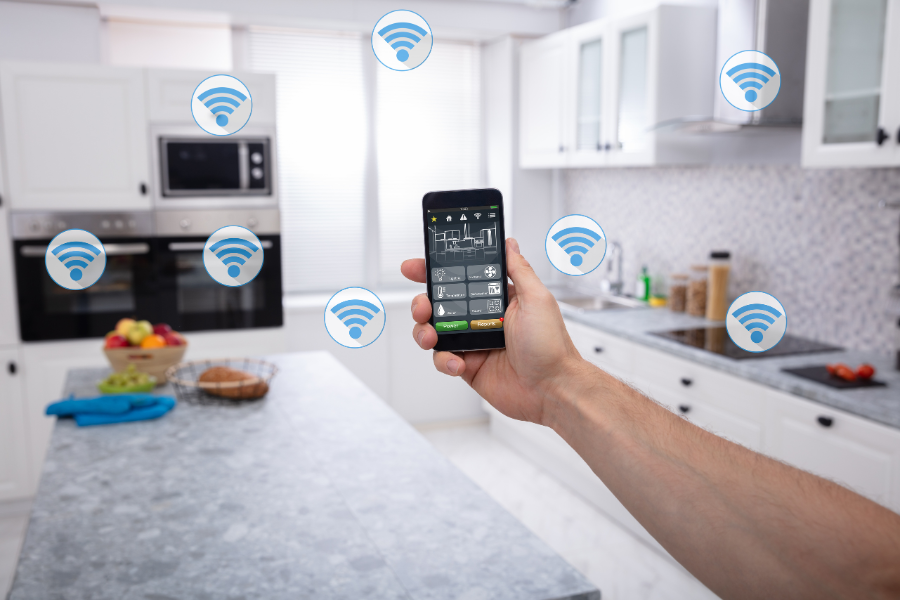
Setting up geofencing for smart homes: A comprehensive guide
In today’s fast-evolving world of technology, the concept of smart homes is becoming commonplace. A significant aspect of smart homes is geofencing. Understanding and setting up geofencing for smart homes can significantly enhance your home’s security and efficiency. This article will guide you through the steps and considerations for implementing geofencing in your smart home.

What is Geofencing?
Geofencing is a technology that uses GPS or RFID to create a virtual geographic boundary, enabling software to trigger a response when a mobile device enters or leaves a particular area. In the context of smart homes, geofencing can automate various tasks based on your location.
How Geofencing Works in Smart Homes
Geofencing in smart homes involves setting up a digital perimeter around your home. When your smartphone crosses this perimeter, it can trigger actions within your smart home system, such as turning on lights, adjusting the thermostat, or locking doors.
The Role of GPS and RFID
Both GPS and RFID play crucial roles in geofencing. GPS is used to determine the location of your smartphone, while RFID can be used for more localized tracking within the home. These technologies work together to create a seamless automation experience.
Benefits of Geofencing in Smart Homes
There are several benefits to implementing geofencing in your smart home. These include improved security, energy savings, and enhanced convenience. For example, you can set your home to lock automatically when you leave and unlock when you return.
Security Enhancements
Geofencing can significantly boost your home’s security by automatically triggering alarms or cameras when unauthorized access is detected. This [home surveillance integration] can provide peace of mind, knowing your home is protected.
Energy Efficiency
By automating systems like heating and cooling based on your location, you can reduce energy consumption, which is both cost-effective and environmentally friendly.
Convenience and Comfort
Geofencing can make daily life more convenient by automating routine tasks. Imagine your lights turning on as you approach your driveway or your coffee maker starting as you wake up.
Setting Up Geofencing for Your Smart Home
To set up geofencing in your smart home, you’ll need a few key components, including a smart home hub, compatible devices, and a smartphone app.
Choosing the Right Smart Home Hub
The smart home hub is the brain of your system. When selecting a hub, ensure it supports geofencing and is compatible with your existing smart devices. For top recommendations, check [best smart home hubs].
Compatible Devices
Ensure your smart devices, such as lights, thermostats, and locks, are compatible with geofencing features. Many modern devices are designed with this functionality in mind.
Using Smartphone Apps
Most smart home systems offer smartphone apps that allow you to configure geofencing settings. These apps can help you define the geofence boundary and set up automated actions.
Potential Challenges and Solutions
While geofencing offers many benefits, it may also present some challenges, such as false triggers and privacy concerns. Understanding these issues and how to address them is crucial for a successful geofencing setup.
Dealing with False Triggers
False triggers can occur if your geofence is too small or if there are GPS inaccuracies. To mitigate this, ensure your geofence is appropriately sized and regularly maintained.
Addressing Privacy Concerns
Privacy is a common concern with geofencing, as it involves tracking your location. To protect your privacy, choose reputable smart home systems with strong data protection policies.
Optimizing Geofencing for Efficiency
To get the most out of geofencing, consider optimizing your setup. This includes regularly updating your software, adjusting settings based on your routine, and integrating with other home automation systems.
Software Updates and Maintenance
Regular software updates are crucial for maintaining security and efficiency. Check for updates frequently and apply them as needed. For more tips, visit [home maintenance tips].
Integration with Other Systems
Enhance your smart home by integrating geofencing with other systems, such as security cameras and voice assistants. This creates a more cohesive and responsive environment.
Future of Geofencing in Smart Homes
The future of geofencing in smart homes looks promising, with advancements in AI and machine learning enhancing its capabilities. These technologies will enable even more personalized and efficient automation.
AI and Machine Learning
AI and machine learning can analyze patterns in your behavior to optimize geofencing actions. This can lead to more seamless and intuitive smart home experiences. Learn more about this [AI integration].
Emerging Trends
Emerging trends in geofencing include increased interoperability between devices and expanded use cases beyond security and automation. Stay informed about these developments to make the most of your smart home system.

FAQs on Geofencing in Smart Homes
What is the main advantage of geofencing in smart homes?
The main advantage is enhanced automation, which improves convenience, security, and energy efficiency.
Can geofencing work without a smartphone?
While a smartphone is commonly used, other devices like smartwatches with GPS functionality can also be used for geofencing.
Is geofencing expensive to implement?
The cost varies depending on your existing smart home setup and the devices you choose. However, the long-term benefits often outweigh the initial investment.
For more in-depth insights into smart home technologies, you can explore external resources like [these smart home solutions].
This article contains affiliate links. We may earn a commission at no extra cost to you.